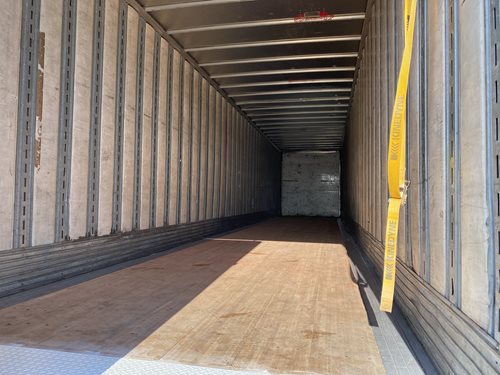 Recently I was confronted with the problem of an aging floor on the oldest trailer in my fleet. Having a floor of oak that started to delaminate and separate over the years, due in part to the previous owner’s lack of preventative floorcare, some worrisome soft spots were starting to develop on what is supposed to be a solid base for the heavy loads we haul. While updating my fleet with a couple of later model units for some new contractor prospects recently, I had to decide on whether I wanted to repair the soft sections of planks, rip out the entire floor and replace it, or just sell the unit and update with something newer. As simple as these three decisions sound, the things I had to consider leading up to my ultimate choice were anything but!
Recently I was confronted with the problem of an aging floor on the oldest trailer in my fleet. Having a floor of oak that started to delaminate and separate over the years, due in part to the previous owner’s lack of preventative floorcare, some worrisome soft spots were starting to develop on what is supposed to be a solid base for the heavy loads we haul. While updating my fleet with a couple of later model units for some new contractor prospects recently, I had to decide on whether I wanted to repair the soft sections of planks, rip out the entire floor and replace it, or just sell the unit and update with something newer. As simple as these three decisions sound, the things I had to consider leading up to my ultimate choice were anything but!
At first glance of the situation, one might say the easy choice would be to just sell the old trailer and pick up something newer. As I got to thinking about the amount of work I had already put into this trailer over my four years owning it and the current market situation for purchasing trailers, the decision to sell it made less and less sense. Shortly after purchasing it as a repo find, it developed a crack in the main suspension beams that caused such an unsafe separation that I had to replace the entire tandem set with that of a slightly used 2015 trailer I had come across, which of course had all the bells and whistles of being an air-slide/air-ride/auto-inflator set of axles. I also recently equipped the trailer with new rubber, and other than the soft spots on the floor, it was still a completely solid food-grade trailer without a single cracked or bent crossbeam or wall patch. The final consideration in my decision of not to sell it was the fact that there is a severely short supply of trailers in the dry van sector available for sale in the marketplace nationwide right now.
With the decision being made to repair and not sell, I was able to find a great trailer repair guy that agreed to come to me for the install. We went over the option for a “patch job” that would require eight 12-foot long planks if I wanted to repair just the damaged sections. With de-lamination beginning to occur, this option could not guarantee more soft sections would not begin to surface elsewhere. Using a floor restoration kit was an option as well, but more like putting a Band-Aid on a bullet wound, since it would eventually give under pressure again sooner rather than later. After careful consideration, I ultimately decided upon a full floor replacement with seven large 48’ long by 12” wide oak planks from Havco.
 Luckily, this was not something new to my mechanic of choice and he was very knowledgeable in this type of major repair. With the amount of labor involved and a slightly higher than normal cost for long floorboards right now, it was definitely going to be one of the most costly fixes I could imagine for a trailer of this age. With the mechanic bringing two of his service trucks and several workers, they were able to make quick work of an extremely difficult task, completing the entire job in just 2 1/2 days! I will admit it is not something I would have attempted on my own, even as apt as I am to do a lot of my own trailer repairs.
Luckily, this was not something new to my mechanic of choice and he was very knowledgeable in this type of major repair. With the amount of labor involved and a slightly higher than normal cost for long floorboards right now, it was definitely going to be one of the most costly fixes I could imagine for a trailer of this age. With the mechanic bringing two of his service trucks and several workers, they were able to make quick work of an extremely difficult task, completing the entire job in just 2 1/2 days! I will admit it is not something I would have attempted on my own, even as apt as I am to do a lot of my own trailer repairs.
When the floor was finished, its flawless appearance and the fresh new look it gave to my wagon helped reassure me that I had made the right choice going with a full replacement and not just an 8-plank patch job! With a solid base now re-installed, this trailer is ready to be put back into service for many more years to come at a fraction of the cost I would have spent replacing it all together!
